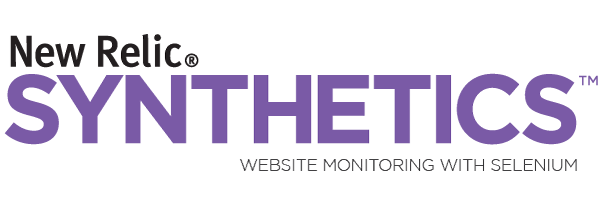Selenium-IDE – Looking back and looking forward
Its been around six months and three releases since I took the reins of Selenium-IDE. The fundamental change in that time has been the adoption of a plugin model like the fine folks over that Firebug. (We’re also self-hosting it which is big from a project internals perspective.)
Right now, you can add custom user-extensions and formatters, but in the very near future you will be able to add location strategies as well.
So what does the future look like for Se-IDE?
- 1.0.8 – A whack of bug fixes, and maybe the location strategies via plugins
- 1.0.9 – If location strategies doesn’t get into 1.0.8, it will be here. And likely bug fixes.
- 1.0.10 – Remove UI-Element from Se-IDE and make it a plugin
There is also work on reworking the internals of Se-IDE from a synchronous model to an asynchronous through Google Summer of Code. If that is successful and we decide to use it, that will trigger a bump to 1.1.0.
Timelines you ask? Well, when I took over Se-IDE the plan was to do it monthly. That was either naive or overly optimistic so they are starting to stretch a bit. 1.0.8 is going to stretch it some more too. Look for a beta of 1.0.8 towards the end of the month with a final version by mid-August.
I know you are likely wondering what cool, superdidooper features will you be seeing in Se-IDE over the next while? Ummm, well, actually none. At least not from the core Se-IDE. There will be significant pushback on any new ‘feature’ or change that adds something to Se-IDE. If you cannot accomplish your goal through a plugin, then I would consider than an omission in terms of the API.
Thats where we are from the maintainer perspective, but end-users also have sway over this as well to some degree. We’re now using the Google Code Issue Tracker for managing the project. If you bug is not there, there is a significantly smaller chance of it being addressed. And if an issue has a number of stars on it, that is also an indicator we should be looking at it.
Now to hack on locators…
A Smattering of Selenium #18
Not too much this week with various holidays around the world, but still managed to dig some things up.
- Sauce Labs has started a webinar series and recently had one on using Cucumber and OnDemand. Cucumber and Robot Framework like tools are the coming wave of testing tools.
- Another bit of Sauce-ish news is the folks at Rally put up a post on how to get Se 2 scripts in their OnDemand cloud
- If writing Se scripts is ‘programming’, then writing the controlling frameworks is real programming. That means that proper development practices should be followed; such as TDD. If you are new to TDD, then The Prags have released a screencast series by Kent Beck would be helpful. I’ll be getting this one as soon as my to-watch backlog gets under control.
- Re-usable Selenium Testing with GWT has lots of tricks to dealing with GWT widgets — something which comes up a lot on the Se-Users mailing list
And lastly, the Selenium Stack Exchange proposal has progressed to the next level which is getting people to commit to using it. The number of commits is a convoluted formula, but every one counts. If you think the Se-Users mailing list is too crazy, this format might be better for you.
A Smattering of Selenium #17
Here are the posts dealing with Se, and/or automation in general that caught my eye and interest.
- Selenium Unit Test Reuse illustrates one way of iterating through environments and browsers in a script without using Se-Grid. I’ve done similar tricks to this to some success — the problem is usually reporting though, but you are all clever folks so I’m sure you could add it in.
- Adding a custom header is sometimes required when writing a script, but its not really that documented so Kevin wrote How to Perform Basic Authentication in Selenium which combines how to do basic auth and header injection.
- Not running your scripts inside CI yet? Shame on you! Hudson creator Kohsuke Kawaguchi gave a talk at Digg which they recorded. I haven’t watched it yet, but Se gets a mention according to the notes at the bottom.
- Haven’t heard of the HAR (HTTP ARchive) format? Don’t worry, I hadn’t either until a bit of a discussion about the captureNetworkTraffic was had and its future in Se
- The Faker/Sham combination is established in the Ruby (and Perl) world as the way to generate random data of a prescribed format. Anthony has release a similar module for Python with some pythonic twists called Picka (as in ‘Pick a card, any card’ erm, well, name or address actually)
- Looking for an example of Page Objects in C#? I was last week and Dave convienently enough posted a page object pattern tutorial
- Adieu to QTP. Now for a closer look at Selenium makes the list just because it uses ‘QTP’ and ‘Chinese bile farm’ in the same sentence.
- Browsermob opensourced sep4j (which I think stands for ‘Se Parallel for Java’) which is a Collection of utilities for Java-based projects to enable Selenium test parallelization using Selenium Grid or Sauce
Labs. - Richard presented at the LJC Unconference on ‘Agile Acceptance Testing with Cucumber, Cuke4Duke, Groovy & Selenium’ and has posted his slides
- Speaking of acceptance tests, Gojko has a post on the Anatomy of a good acceptance test
- Last thing on acceptance tests for this week is actually multiple things. Markus recently did a Weekend Testers event using RobotFramework and ParkCalc and has started a series of posts about it: Getting Started, ParkCalc automation – Refactoring a data-driven test and ParkCalc automation – Refactoring a keyword-driven test are the first three posts in it. Hopefully there will be more too.
- And I’ll finish with one of my posts from this week which was on how to deal with pesky file downloads in Se. (hint: don’t use Se for downloading files)











